GUTORAN [Korea Quality] / 구토란펜션 [한국관광 품질인증]
21.41792646959784m 782 2023-09-05
17-25 , Gwigye-gil, Gyeongju-si, Gyeongsangbuk-do
+82-54-746-4847, +82-10-3520-9576
Gutoran is a hanok pension in Naenam-Myeon, Gyeongju, Gyeongsangbuk-do, owned by a ceramic artist who has hand-painted and decorated the house with his own roof tiles and pottery. In front of the house is a garden and lotus pond, also decorated with ceramic works. Nearby is the owners’ pottery workshop called (‘Gutoranyo’) where visitors can take part in ceramic classes.
Yongsan Sashimi Restaurant (용산회식당)
4.0 Km 5070 2024-03-04
112 Poseok-ro, Naenam-myeon, Gyeongju-si, Gyeongsangbuk-do
054-748-2119
Situated near Cheollyongsa Temple in Gyeongju, Yongsan Hoe Restaurant is exclusively dedicated to hoedeopbap (raw fish bibimbap). Customers are served a generous portion of hoe (raw fish) over rice in a large brass bowl. The topping's hoe is freshly mixed with the catch of the day, varying seasonally with options like herring, grey mullet, gizzard shad, and plaice, all sourced from Guryongpo Port in Pohang. Due to its popularity, there is often a waiting line, so obtaining a numbered ticket to queue is recommended.
Surime (수리뫼)
4.2 Km 10129 2019-11-21
110-32, Poseok-ro, Gyeongju-si, Gyeongsangbuk-do
+82-54-748-2507
Surime is surrounded by Gyeongju Namsan Mountain, a designated UNESCO World Cultural Heritage Site. Surime serves royal cuisine from the Joseon dynasty, prepared by royal cuisine expert Park Misuk. All dishes are prepared with fresh ingredients grown in the Surime garden for a pure, natural taste. In addition to being a restaurant, guests can also participate in various food programs.
Surime (수리뫼 [한국전통음식체험교육원])
4.2 Km 22568 2021-01-28
110-32, Poseok-ro, Gyeongju-si, Gyeongsangbuk-do
+82-54-748-2507
Surime is a traditional Korean food experience center owned and operated by Park Mi-suk who studied under Hwang Hye-seong, holder of the Intangible Cultural Property No. 38, Royal Cuisine of the Joseon Dynasty. The institute operates various traditional cooking experience programs open to everyone. The institute shares the walls of the Choi family home, designated as a cultural asset, spanning over 1,652.89 ㎡ with well-preserved hanok structures built over 100 years ago.
The Oriental Medicine Resort: Chorakdang (한방테마파크 초락당)
5.8 Km 17091 2021-02-10
44-34, Gyemyeong-ro, Ulju-gun, Ulsan
+82-52-264-8001
Opened in 2001, Chorakdang is a health resort that specializes in Oriental medicine treatments. The resort offers the perfect setting for rest, relaxation, and medical treatments. The traditional hanok buildings and natural surroundings intensify the health benefits of the resort.
Gyeongju Bae-dong Samneung Royal Tombs (경주 배동 삼릉)
6.6 Km 24052 2020-04-06
Bae-dong, Gyeongju-si, Gyeongsangbuk-do
+82-54-779-6100
Samneung meaning "three royal tombs," has strong ties to history. The three royal tombs house three kings of the Silla Kingdom: King Adala (8th King of the dynasty), King Sindeok (53rd) and King Gyeongmyeong (54th).
King Adala, who cared deeply for his people, went to war after his citizens were abducted by the invaders of Baekje. But when Baekje asked for a peace treaty, King Adala released the prisoners he took during the engagement. During his rulling, a kingdom in Japan sent an envoy to ask for friendly relations with Silla. King Adala’s tomb is 58m in circumference at the base, 5.4m in x_height and 18m in diameter.
When King Hyogong died without any heirs, the people of the kingdom crowned his son-in-law as their next king – King Sindeok. During his reign, King Sindeok devoted himself to protecting his kingdom from invasions by Gyeonhwon and Gungye. The royal tomb is 61m in circumference at the base, 5.8m in x_height and 18m in diameter. It was robbed twice, inviting investigations in 1953 and 1963. The investigations revealed the tomb to be a chamber made of stone.
King Gyeongmyeong, the son of King Sindeok, together with Wanggeon, the founder of the Goryeo dynasty, successfully defeated Gyeonhwon’s attack against Daeyaseong Fortress. During his reign, he attempted to establish diplomatic relations with the Hudang dynasty of China, but was unsuccessful. The tomb is 50m in circumference at the base, 4.5m in x_height and 16m in diameter.
Sinseonam Hermitage Rock-carved Bodhisattva in Namsan Mountain of Gyeongju (경주 남산 신선암 마애보살반가상)
7.1 Km 27996 2020-04-04
Namsan-dong, Gyeongju-si, Gyeongsangbuk-do
+82-54-779-6100
This 1.4 m-high rock-carved Bodhisattva was carved on the southern rock standing right above Chilburam Rock on Namsan Mountain, which may be regarded as a repository of relics and artifacts including Buddha statues spanning the Three Kingdoms Period to the late Unified Silla Period.
Judging from the three-sided bejeweled crown he’s wearing on his head, this is clearly a Bodhisattva statue. He looks as if he is sitting on a cloud, while the closed eyes on the plump face give the impression that he is lost in deep thought. He seems to be watching mankind from his world above the clouds. He is holding a flower in his right hand and his left hand is held up to his chest as if he is preaching.
His robe is very thin, revealing the curves of the body, and hangs down to the base of the pedestal. The mandorla (Buddhist halo of light), which consists of both the dugwang (light radiating from the head) and hte singwang (light emanating from the Buddha’s body), is also the shrine for the statue, so the image of the Bodhisattva looks more prominent. It is presumed that this rock-carved Bodhisattva was made during the late eighth century during the Unified Silla dynasty.
Gyeongju Namsan Mountain (경주 남산)
7.2 Km 64148 2024-02-27
Namsan Mountain of Gyeongju (경주 남산)
+82-54-771-7142
Namsan Mountain of Gyeongju is a 466-meter mountain located south of the Gyeongju city center. Gyeongju was the capital of the Silla dynasty (BC 57-AD 935) from its inception to its end. The Silla people revered this mountain, considering it sacred, and left many traces of their presence, resulting in numerous cultural relics that still exist today. Therefore, visitors can enjoy both hiking and cultural heritage sightseeing on this mountain.
Gyeongju Poseokjeong Pavilion Site (경주 포석정지)
7.7 Km 36450 2020-10-06
816, Namsansunhwan-ro, Gyeongju-si, Gyeongsangbuk-do
+82-54-745-8484
Poseokjeong Pavilion served as a separate palace where kings enjoyed banquets with nobles. The building no longer exists, but the abalone-shaped stone water canal still remains, speculated to have been built during the Unified Silla period although the exact year is unknown. The water canal has an estimated length of 10 meters, with a x_width of approximately 35 centimeters and an average depth of 26 centimeters. Based on Chinese writings from 353, it is said that drinking glasses were floated on the canal. One popular party game had guests creating poems before the glass had passed nine sections of the canel. Guests who could not do this had to drink three glasses. Modern research has shown that the site was not merely a place for fun, but also served as a meeting venue for the royal family, as well as for holding memorial services.
Gyeongju Tomb of King Muyeol, Stele of King Taejong Muyeol (경주 무열왕릉, 태종무열왕릉비)
8.5 Km 21355 2022-08-18
10-4, Neungnam-gil, Gyeongju-si, Gyeongsangbuk-do
+82-54-750-8614
The Tomb of King Muyeol is the tomb of Kim Chun-chu, who acsended to the throne as King Muyeol (r. 654-661), the 29th ruler of the Silla Kingdom. The tomb is located at the southwestern foot of Seondosan Mountain in Gyeongju. As king, he sought to unify the three kingdoms by allying forces with China's Tang dynasty, but passed away before he could successfully accomplish his goal. His tomb is relatively large, reaching a x_height of 8.7 meters, and having a circumference of 114 meters. Originally made with large stones, the tomb has been covered in dirt and grass with the passing of time. To the east of the grave are the remains of his stele with an inscription that reads “Taejong Muyeol Daewangjibi (Tombstone of the Great King Muyeol)," indicating the owner of this grave.
![GUTORAN [Korea Quality] / 구토란펜션 [한국관광 품질인증]](http://tong.visitkorea.or.kr/cms/resource/14/2998914_image2_1.jpg)

![Surime (수리뫼 [한국전통음식체험교육원])](http://tong.visitkorea.or.kr/cms/resource/98/1967598_image2_1.jpg)
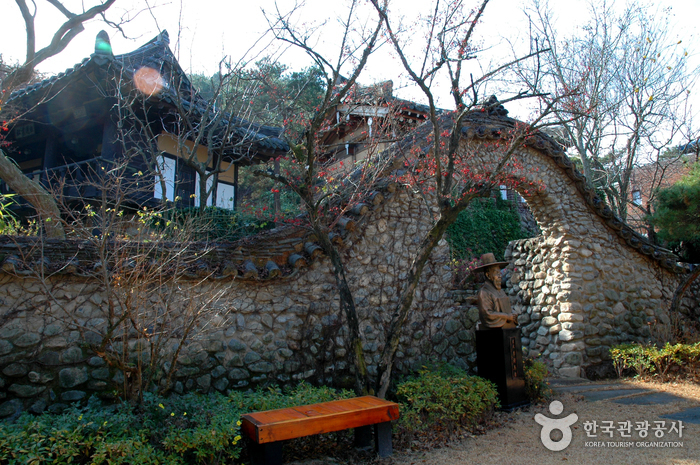
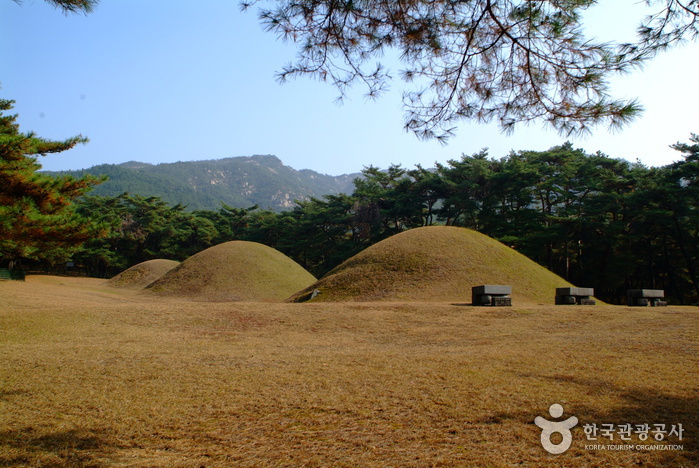
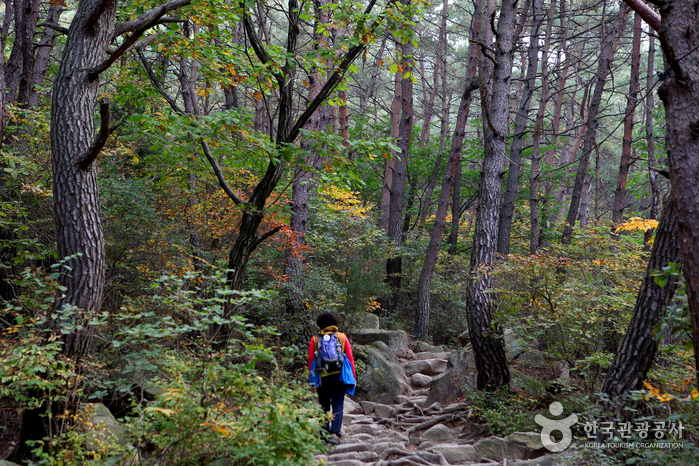
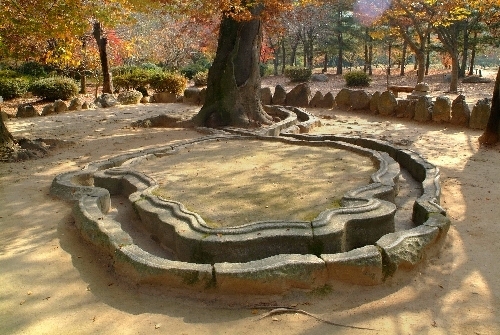
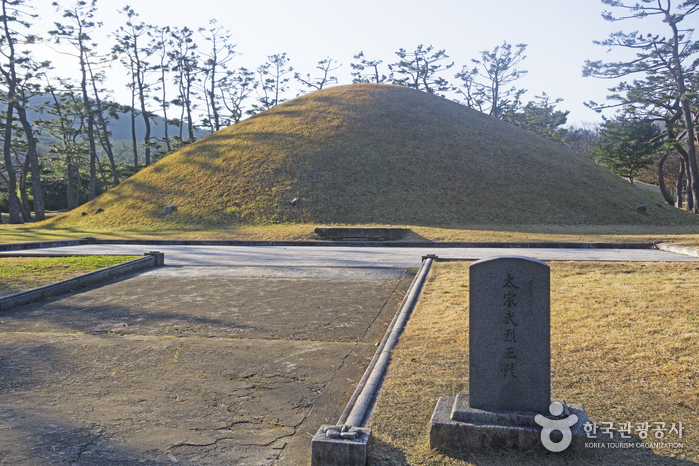
 English
English
 한국어
한국어 日本語
日本語 中文(简体)
中文(简体) Deutsch
Deutsch Français
Français Español
Español Русский
Русский